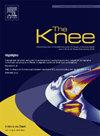Resection of pathologically altered infrapatellar fat pads during total knee arthroplasty has a positive impact on postoperative knee function
IF 1.6
4区 医学
Q3 ORTHOPEDICS
引用次数: 0
Abstract
Background
The ongoing debate regarding the excision of the infrapatellar fat pad (IPFP) during total knee arthroplasty (TKA) remains a contentious issue, with established parameters for IPFP management still lacking. Excessive resection of IPFP tissue may lead to patellar tendon (PT) shortening and reduced mobility of the knee joint. This study aims to evaluate whether the resection of pathologically altered IPFP tissue during TKA affects knee joint function and PT dimensions.
Methods
A total of 100 patients with end-stage knee osteoarthritis (KOA) who successfully underwent their first TKA were randomly assigned to two groups: one group received resection of the pathologically altered IPFP tissue, while the other group underwent complete resection of all IPFP tissue. The excised IPFP specimens were subjected to pathological and immunohistochemical analysis. Patients underwent X-ray and MRI assessments prior to surgery, as well as at 6 weeks and 6 months postoperatively; additionally, the Numeric Rating Scale (NRS), Knee Injury and Osteoarthritis Outcome Scale (KOOS), and Oxford Knee Score (OKS) were utilized for evaluation. Furthermore, patellar tendon length and thickness were assessed.
Results
Histological examination of the IPFP tissue from patients with KOA revealed that not all IPFP specimens exhibited lesions under hematoxylin and eosin (HE) staining and immunohistochemical analysis, with lesion areas predominantly localized near the synovium. There was no significant difference in the NRS scores between the two patient groups at 6 weeks or 6 months postoperatively (Mann–Whitney test, P = 0.391; P = 0.055). However, a significant difference was observed in both KOOS and OKS between the two groups at 6 months after surgery (Mann–Whitney test, P < 0.05). Sonographic evaluation of patellar tendon parameters indicated a significant difference in PT thickness between the two groups only at 6 weeks postoperatively (Mann–Whitney test, P < 0.05).
Conclusions
This study demonstrated that the resection of pathologically altered IPFP tissue during TKA in patients with end-stage KOA can significantly enhance early postoperative knee joint mobility, improve life satisfaction, and mitigate the impact on PT structure.
全膝关节置换术中切除病理改变的髌下脂肪垫对术后膝关节功能有积极影响
背景:关于全膝关节置换术(TKA)中髌下脂肪垫(IPFP)切除的持续争论仍然是一个有争议的问题,IPFP管理的既定参数仍然缺乏。过度切除IPFP组织可能导致髌骨肌腱(PT)缩短和膝关节活动能力降低。本研究旨在评估TKA期间切除病理改变的IPFP组织是否会影响膝关节功能和PT尺寸。方法将100例成功行第一次全膝关节置换术的终末期膝关节骨性关节炎(KOA)患者随机分为两组:一组切除病理改变的IPFP组织,另一组完全切除所有IPFP组织。切除的IPFP标本进行病理和免疫组织化学分析。患者在手术前以及术后6周和6个月接受x射线和MRI评估;此外,采用数值评定量表(NRS)、膝关节损伤和骨关节炎结局量表(oos)和牛津膝关节评分(OKS)进行评估。此外,评估髌骨肌腱的长度和厚度。结果对KOA患者的IPFP组织进行组织学检查,苏木精和伊红(HE)染色和免疫组织化学分析显示,并非所有IPFP标本都有病变,病变区域主要集中在滑膜附近。两组患者术后6周、6个月NRS评分差异无统计学意义(Mann-Whitney检验,P = 0.391;p = 0.055)。然而,术后6个月,两组患者的kos和OKS差异有统计学意义(Mann-Whitney检验,P <;0.05)。髌腱参数的超声评估显示,仅在术后6周,两组之间的PT厚度存在显著差异(Mann-Whitney test, P <;0.05)。结论终末期KOA患者在TKA期间切除病理改变的IPFP组织可显著提高术后早期膝关节活动能力,提高生活满意度,减轻对PT结构的影响。
本文章由计算机程序翻译,如有差异,请以英文原文为准。
求助全文
约1分钟内获得全文
求助全文
来源期刊

Knee
医学-外科
CiteScore
3.80
自引率
5.30%
发文量
171
审稿时长
6 months
期刊介绍:
The Knee is an international journal publishing studies on the clinical treatment and fundamental biomechanical characteristics of this joint. The aim of the journal is to provide a vehicle relevant to surgeons, biomedical engineers, imaging specialists, materials scientists, rehabilitation personnel and all those with an interest in the knee.
The topics covered include, but are not limited to:
• Anatomy, physiology, morphology and biochemistry;
• Biomechanical studies;
• Advances in the development of prosthetic, orthotic and augmentation devices;
• Imaging and diagnostic techniques;
• Pathology;
• Trauma;
• Surgery;
• Rehabilitation.
 求助内容:
求助内容: 应助结果提醒方式:
应助结果提醒方式:


